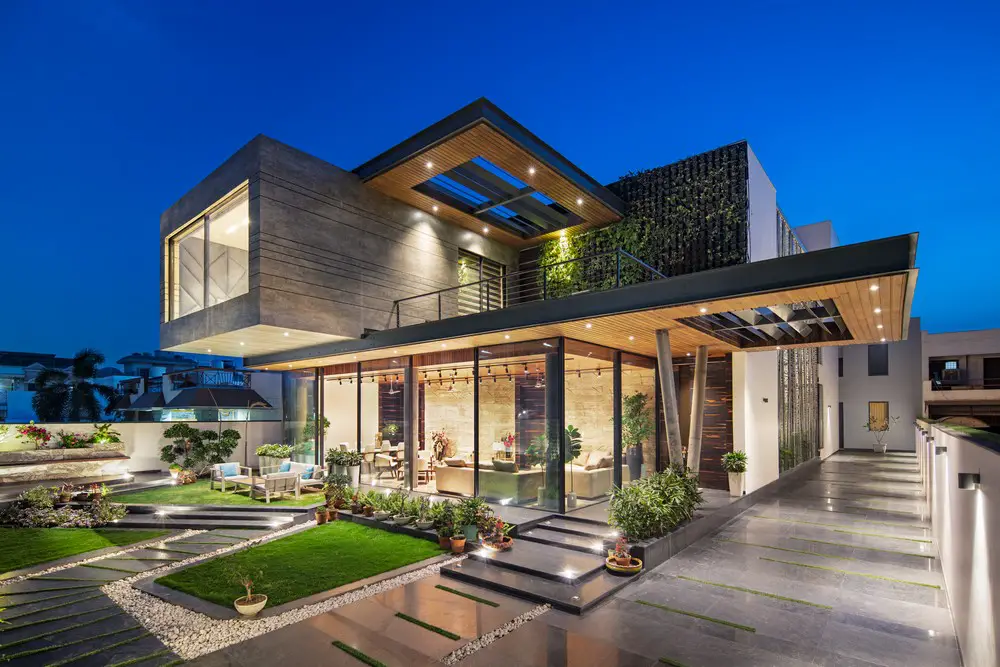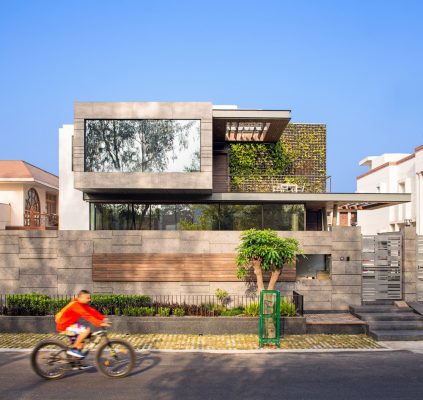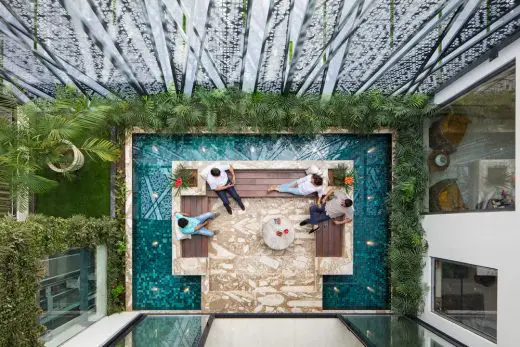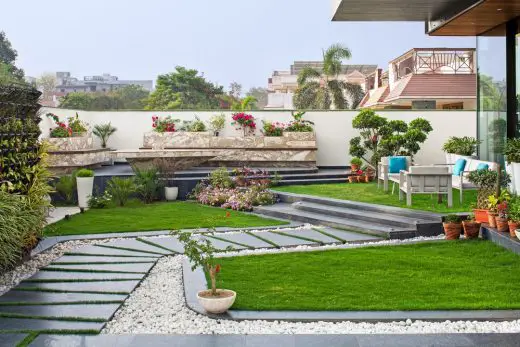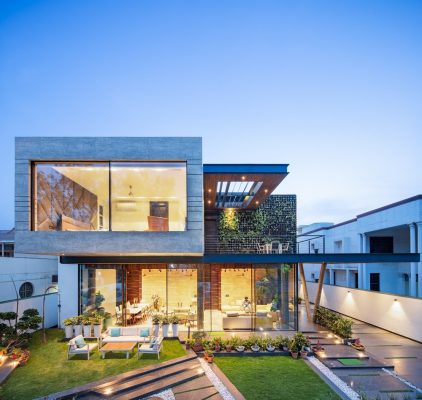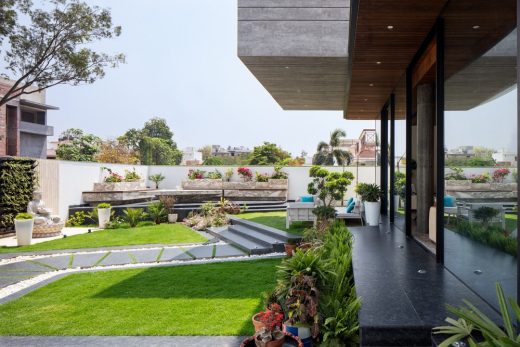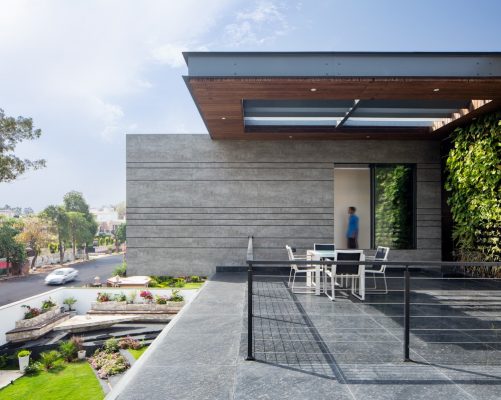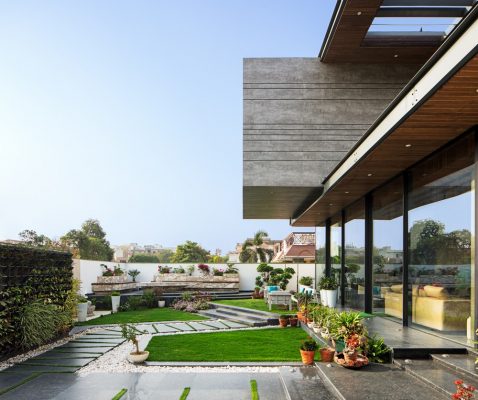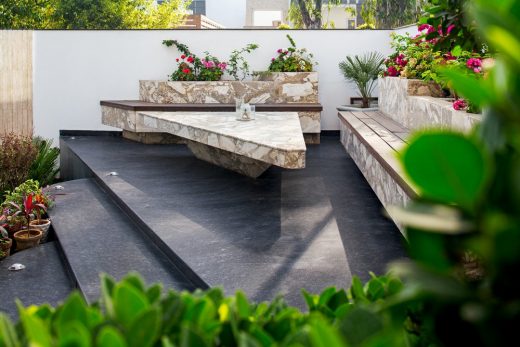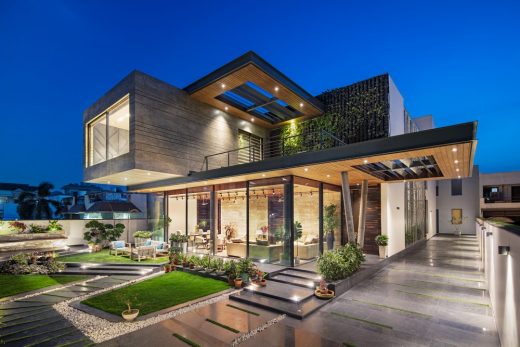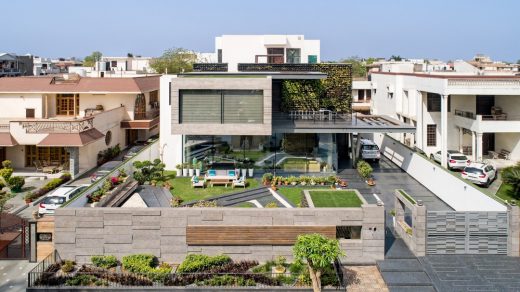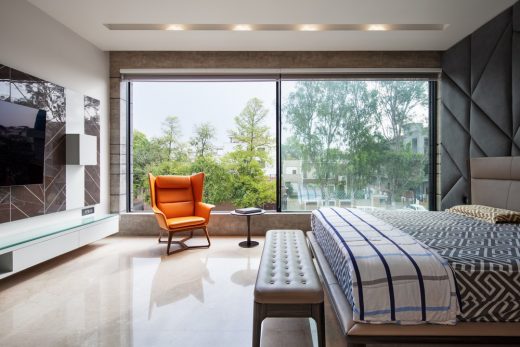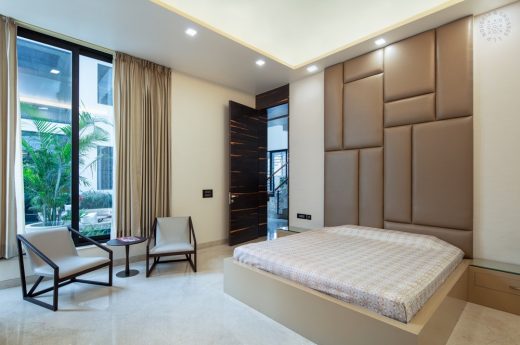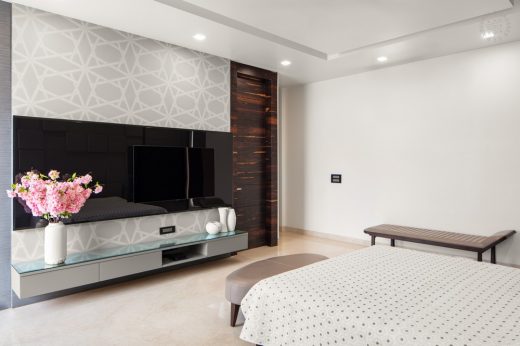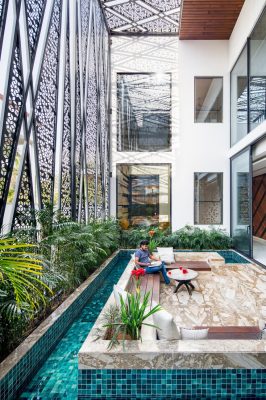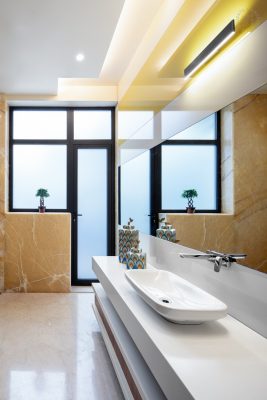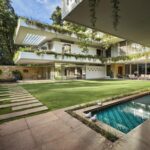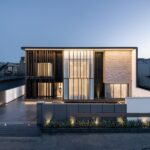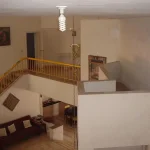Cantilever House Ghaziabad, Uttar Pradesh Home Images, ZED Lab Architecture, Indian Real Estate
Cantilever House, Ghaziabad Property
9 Apr 2021
The Cantilever House
Design: ZED Lab Architects, Delhi
A recently completed project by ZED Lab – The Cantilever House, Ghaziabad, India. ZED Lab are a Delhi-based, research-driven and interior design studio specializing in net-zero energy buildings since 2009.
Location: Ghaziabad, Uttar Pradesh, northern India
Photos by Noughts and Crosses | Andre J. Fanthome
The Cantilever House draws from the regional vernacular and finds expression through a contemporary lens to become a home for a family of four. Located in the Raj Nagar locality of Ghaziabad, part of the National Capital Region of Delhi, the house is designed in response to the clients’ love for the outdoors. It employs a series of mechanisms that minimize resource consumption, and reduce the building’s environmental impact while enhancing the residents’ thermal comfort.
Architectural Design
The large cantilevers that the house derives its name from, anchor its design vocabulary, highlighting the scale of the building and breaking its mass through the focus on horizontality. The primary challenge was to design the frame with judicious use of steel for economic viability, given that the cantilevers form a dominant part of the design scheme and a typical one demands adequate steel reinforcement to generate structural integrity.
Additionally, the design received scepticism from the client, and workers on the site had to be trained to execute the construction with precision. The overarching design intent however, was to create a sense of privacy while channelling an open, connected environment for the family. This took shape through an interesting interplay of living spaces, with the main living areas occupying the ground floor and the private areas located on the first floor.
The design scheme was largely driven by two endeavours: first, to assimilate traditional building wisdom and find an appropriate expression within the contemporary context. Second, the distribution of various private spaces and varying volumes are planned in order to account for the diversity of usage based on the time of the day and privacy required. a series of connected living spaces, courtyards, and bedrooms were planned with the intent to create a home that could be brought to life throughout the day. Similarly, the cantilever slabs spanning the verandah, render a modern aesthetic while creating shaded spaces underneath.
The geometry of the cantilevered forms is such that it aids in externalizing rooms and maximizing space, serving not only aesthetic but also functional purposes. Spaces are fluid and interwoven, with interstitial spaces creating seamless transitions from the inside to the outside. As one is led into the house through the double-height lobby on the east-facing entrance porch, they are pleasantly surprised by the garden’s view with a water body. Bringing the exterior environment inside, by providing green areas in the interior spaces, establishes a strong visual connection with the outdoor landscape.
The east (front) elevation of the house features expansive projections that break the mass of the house. The master bedroom, located on the first floor is designed as a cantilevered block, jutting out over the landscaped garden. A large opening brings in ample light whilst offering expansive views of the front lawns.
The design lays emphasis on responsible living through its layout, the use of passive cooling techniques and by drawing energy from renewable resources. Metaphorically, the house is an oxymoron, serene and cool, with minimalistic decors, yet simultaneously, adventurous in its design approach.
Climatic Considerations
The house responds to the hot and dry climate prevalent in the region through a host of design interventions and passive cooling techniques. By placing the living areas in the north and the east to bring in sufficient daylight and by allocating space for private areas in the west and the south, the house records minimal heat gain throughout the day. The windows on the south are shaded by a pergola to ensure that the south face remains comfortable throughout the year.
Interiors
The interiors comprise a material palette featuring varying shades of browns and greys juxtaposed with the use of bright, upholstered furniture and decor elements. The house is full of cozy nooks, designed for maximum comfort and wellbeing, as well as encouraging responsible living.
Sustainable Design
The Cantilever House takes into account the harsh North Indian climate and employs a series of mechanisms that minimize resource consumption and reduce the building’s environmental impact while enhancing the residents’ thermal comfort. For example, the double-height lobby is flanked by the summer court on the north and the winter court on the south to enable stack ventilation at all times.
The night-time spaces are characterized by optimum thermal mass to protect the day-time spaces from the south and west sun. The north face of the house is glazed to admit diffused daylight and avoid heat gain and glare. To prevent heat gain from the south, the design minimized the number of windows on the south façade and these were shaded further with the addition of a pergola. The facade is fitted with double-glazed units with low-E coating for thermal resistance. Nearly all glazing for the day-time spaces is designed to open into the water court.
Additionally, the integration of landscape features with the built envelope ensures a cool microclimate for the residents. The water court on the north serves as a heat sink; the plants and vertical garden also contribute to thermal comfort while purifying the air, trapping dust and pollutants. The front and rear lawns along with the water court serve as recharge pits for rainwater harvesting. The residents’ hot water requirements are met by evacuated tube solar hot water systems installed on the rooftop.
Conclusion
With an overarching focus on utilizing transitional spaces, the design for the Cantilever House upholds the importance of such spaces in providing adaptability and enhancing the built quality of the environment. The house borrows from the Indian vernacular and its traditional architectural elements and is informed by a deep and innate understanding and application of age-old bioclimatic wisdom reinterpreting them to become an energy-efficient and sustainable family home.
The Cantilever House, Ghaziabad, Uttar Pradesh images / information received 080421 from ZED Lab Architects
Photography: Noughts and Crosses | Andre J. Fanthome
Location: Cantilever House, Ghaziabad, Uttar Pradesh, northern India
New Indian Houses
Best Contemporary Residences in India, chronological list
Indian Houses – property selection below:
18 Screens House
Design: Sanjay Puri Architects
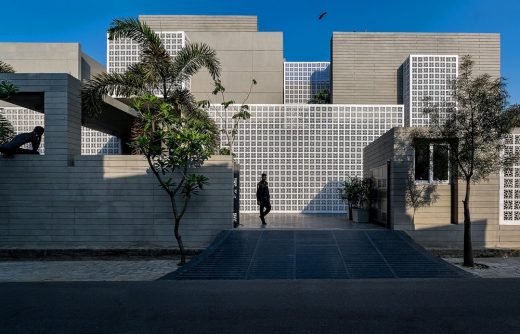
photograph : Dinesh Mehta
18 Screens House in Lucknow
Architecture: UJJVAL FADIA
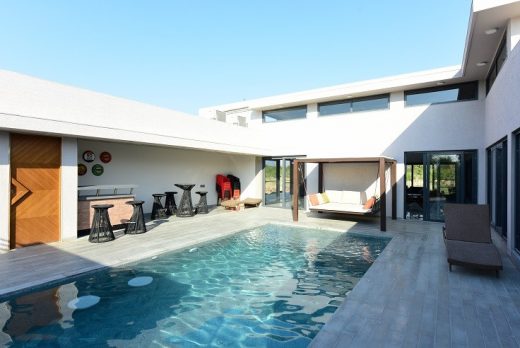
photograph : Subhash Patil
Bavlu Weekend House in Ahmedabad, Gujarat
Amaltas House, Vadodara, Gujarat, India
Architecture: SquareWorks LLP
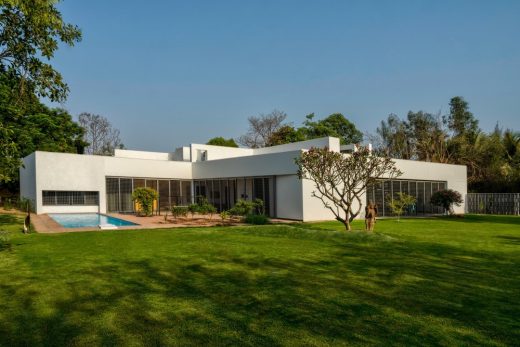
photograph : Fabien Charuau
Amaltas House in Vadodara, Gujarat Real Estate
The Verandah House, Ranchodpura, Ahmedabad
Architecture: Modo Designs
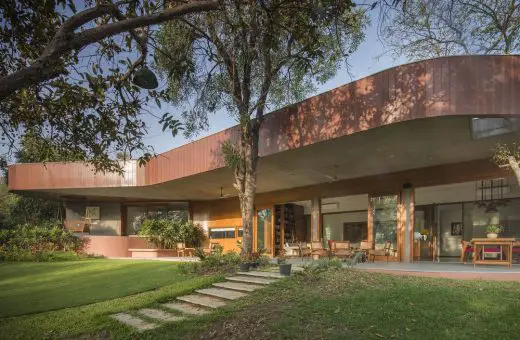
photography : Bharat Aggarwal / Monika Sathe
New Property in Ahmedabad
The Infinity House, Khandala, Western Ghats, Maharashtra, western India
Architects: GA design
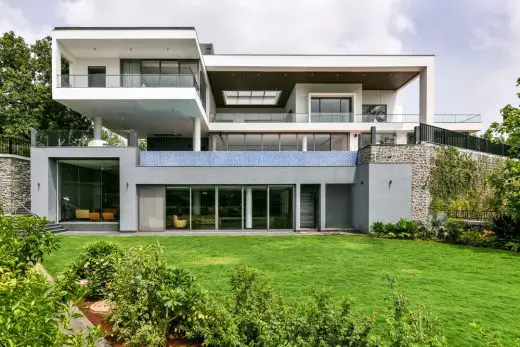
photograph : Prasant Bhat
The Infinity House in Khandala
Indian Architecture
Indian Architecture Designs – chronological list
Indian Architect – design firm listings on e-architect
New Buildings in India
Week End House in Pune
Architecture: Sunil Patil & Associates
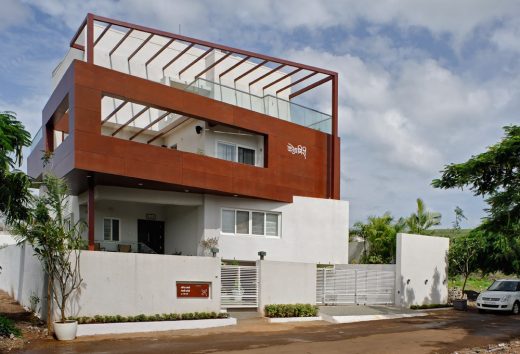
photo : Hemant Patil
New House in Pune
11 K Vaks Weekend House
Design: Ketan Jawdekar, Studio K-7

photograph : Sameer Chawda
11 K Vaks Week End House
Comments / photos for the Cantilever House, Ghaziabad, Uttar Pradesh design by ZED Lab Architects page welcome

